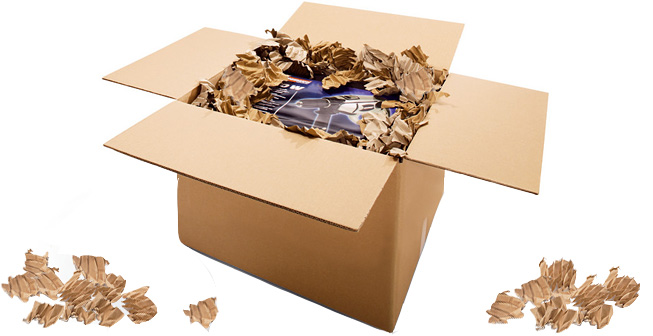Excess cannot lead to success

The Industry Council for Packaging and the Environment (INCPEN) has issued a factsheet in defence of packaging which aims to dispel certain myths about the business. Chief among these is that manufacturers routinely use excessive amounts of packaging materials, resulting in large amounts of waste being sent to landfill.
No one is going to try and claim this never happens. We’ve all come across it and you don’t have to hunt around the internet long to find some jaw-dropping examples. Click here for my favourite.
Examples like that do unfortunately give the business a bad name, as well as deflecting attention from the overall benefits that good packaging can and does bring.
Why would a company use excessive packaging?
Packaging isn’t free, someone has to pay for it in the end. Neither is much of it small. In a highly competitive market place, any business using too much of it would be behaving in a foolhardy manner, to say the least. As well as the cost of the packaging itself, the resulting parcel will almost certainly be bigger and/or heavier than it needs to be, meaning increased delivery costs.
In other words, a company using excessive packaging will be putting itself at a competitive disadvantage.
What good protective packaging does is ensure that a product gets from factory to the market place and from market place to its final destination undamaged. Too little packaging, resulting in damaged goods, can be an even bigger problem than too much packaging in terms of wasted energy and resources, as a report by the Institute of European Environmental Policy points out.
Finding the right balance between these two considerations is not easy, and it is almost always preferable to have a little too much packaging than a little too little!
Packaging and the law
Of course, if you do come across unnecessarily excessive packaging, bear in mind that it is against the law. Offenders can be reported to Consumers Direct, who will ask trading standards officers to investigate. There is also a European Packaging Directive in force, while the INCPEN Responsible Packaging Code of Practice is used as a guide by trading standards officers.
And remember that, while it may be relatively easy to find examples of excessive packaging online, or to think that a product you have bought has been packaged excessively, every day millions of products are bought, sold and transported safely, not just around the UK but around the world, thanks to packaging – we just tend not to notice when things go right!
As one of the UK’s leading packaging suppliers, Davpack is proud to sell effective, low cost packaging, much of which is recycled, recyclable or degradable, including some of our biggest sellers, such as cardboard boxes, polystyrene void fill and packing peanuts, kraft brown paper rolls and sheets, padded envelopes and even bubble wrap. Packaging makes up less than 5% – by weight and volume – of waste in the UK’s landfill sites and, as more degradable and recyclable packaging products come on the market, that number can only decrease even further over the coming years. It’s a future we’re very much looking forward to!
Rick Stanford
Latest posts by Rick Stanford (see all)
- Davpack’s Top Tips for Secure Strapping - 7th September 2022
- The Paper vs Plastic Bubble Wrap Debate - 10th August 2022
- Save Money with Royal Mail Sized Packaging - 8th July 2022
